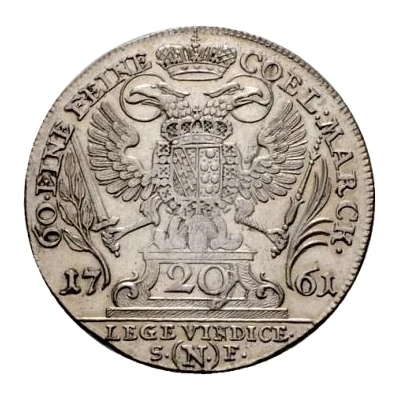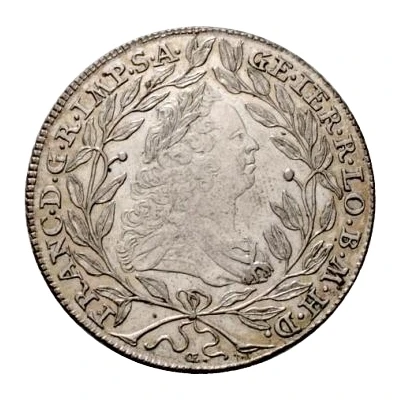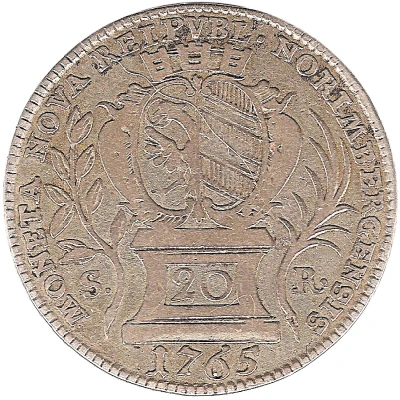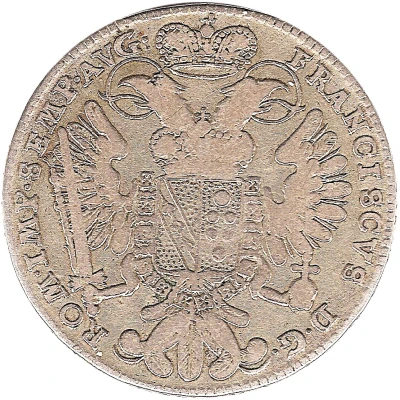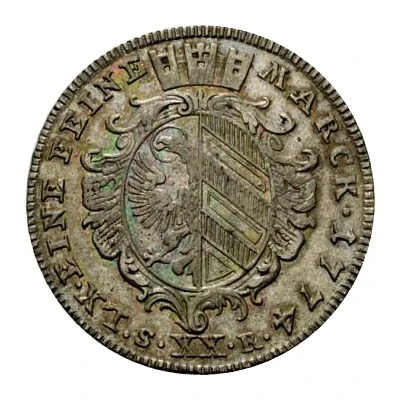
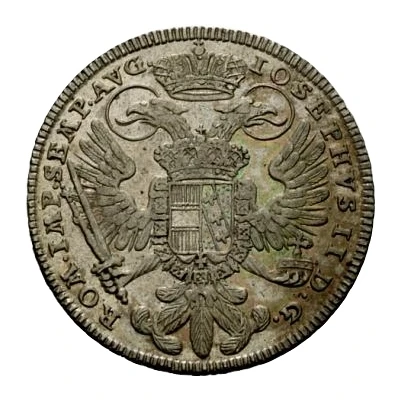

© Hess Divo
20 Kreuzer
| Silver | 6.65 g | 30 mm |
| Issuer | Free imperial city of Nuremberg (German States) |
|---|---|
| Period | Free City (1219-1806) |
| Type | Standard circulation coin |
| Years | 1764-1765 |
| Value | 20 Kreuzers (⅙) |
| Currency | Konventionsthaler (1754-1807) |
| Composition | Silver |
| Weight | 6.65 g |
| Diameter | 30 mm |
| Shape | Round |
| Demonetized | Yes |
| Updated | 2024-10-05 |
| Numista | N#132845 |
|---|---|
| Rarity index | 100% |
Reverse
Crowned shield on eagle's breast.
Script: Latin
Interesting fact
The 20 Kreuzer coin from Nuremberg was minted during a time of great economic and political change in Europe. The coin was issued during the reign of Emperor Francis I, who was instrumental in introducing new currency reforms across the Holy Roman Empire. The 20 Kreuzer coin was one of the first coins to be minted under these reforms, which aimed to standardize currency across the empire and promote trade and commerce. The coin's design features the coat of arms of Nuremberg on one side and the imperial eagle on the other. The coat of arms includes a shield with a distinctive red and white pattern, which represents the city's connection to the Holy Roman Empire. The imperial eagle, on the other hand, symbolizes the coin's connection to the larger empire and the authority of the emperor. Overall, the 20 Kreuzer coin from Nuremberg is an interesting example of the currency reforms that took place during this time period and highlights the complex political and economic relationships between different regions within the Holy Roman Empire.
